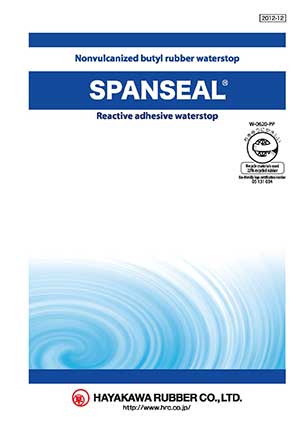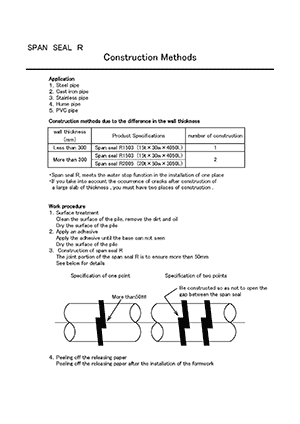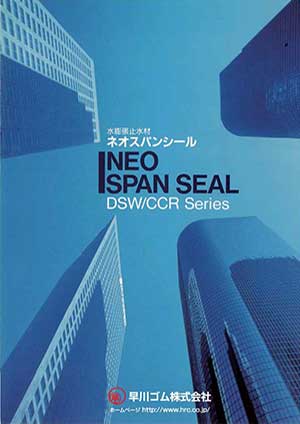
Nonvulcanized butyl rubber water stop
Spanseal
Adhesive function of Span Seal and fresh concrete. Span Seal is a non-vulcanized adhesive plastic which uses reclaimed butyl rubber that has undergone specialized processing. One of its major characteristics is that it adheres to fresh concrete as the hydration reaction of fresh concrete progresses. This adhesion mechanism has been scientifically defined, and is the result of the active group (carboxyl group) which is produced through the specialized processing of butyl rubber. More specifically, the metal oxide ions contained in cement and the active groups in Span Seal undergo an ionic reaction which forms a chemical bond (adhesion).

- Span Seal completely bonds with fresh concrete to stop water.
- The rubber base material provides shock-absorbing characteristics as well as adaptability for expansion and contraction resulting from structure temperature changes.
- The butyl rubber main ingredient possesses excellent weather resistance, alkali resistance, and waterproof properties.
- Span Seal W Type uses galvanized steel sheets (0.4 mm) as a core material which allows for reliable construction implementation without bending due to concrete pressure even in screw pump vehicles, etc.
- Span Seal RGS Type is installed before rebar assembly, which gives it great workability and allows for reliable implementation of construction work. It attaches and forms extremely well to protruding sections and corners of below grade walls and molding.
- Span Seal WT Type is attached before pouring concrete which allows for more reliable construction management. Construction is simple, with the product wrapped alternatingly left and right around curved sections and fixed to rebar using binding wire.
- Span Seal R and H types are affixed to H beams and penetrating pipes using adhesive to form reliable waterproof boundaries.
- Eco Mark certified environmentally friendly products.
■Civil engineering applications
■Architectural applications
Railways/roads
Above ground structures
Dams
Electric power plants
Underground structures
Water supply and sewage
Agricultural irrigation
PC building structures
Rivers, harbors, etc.



